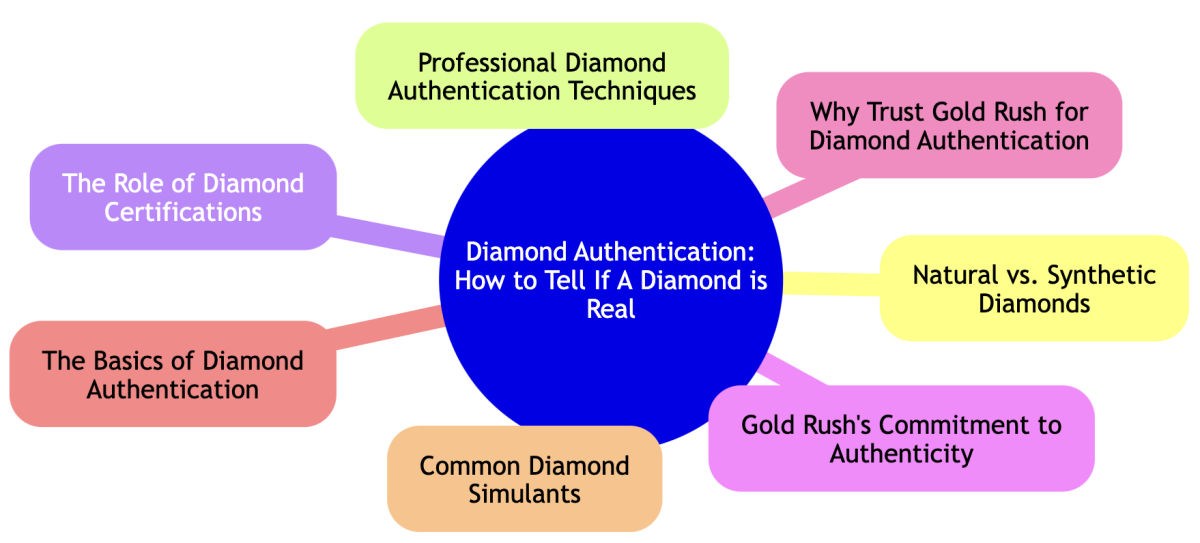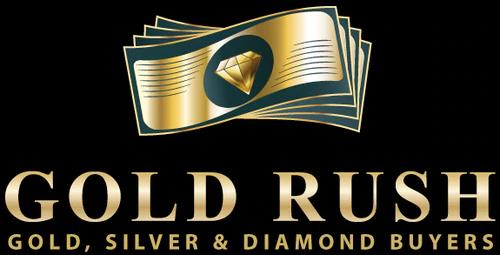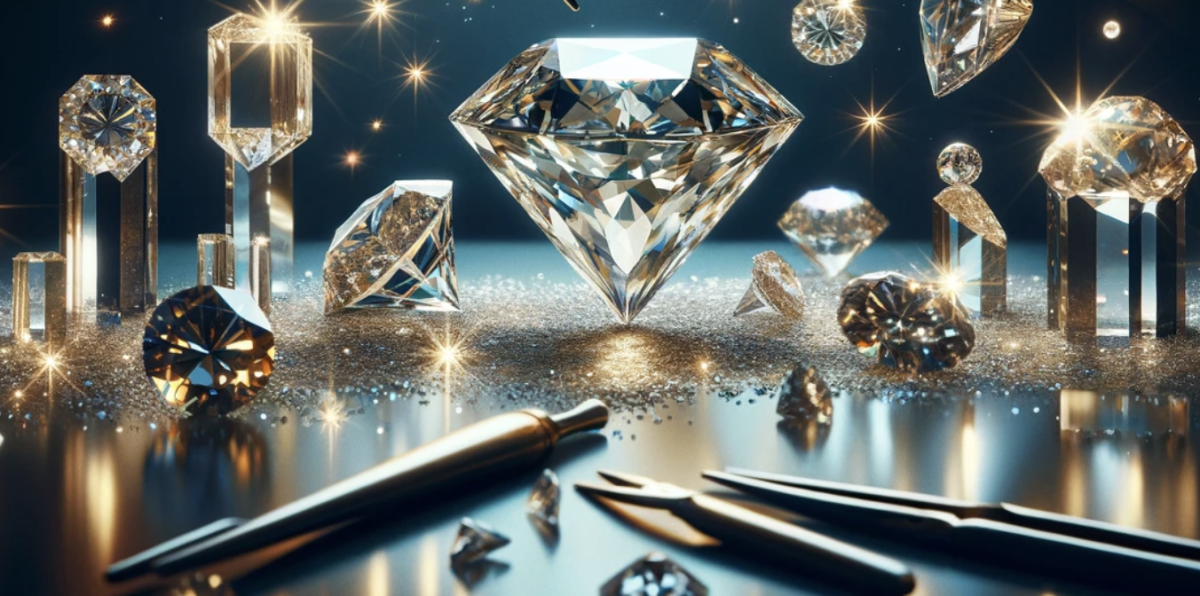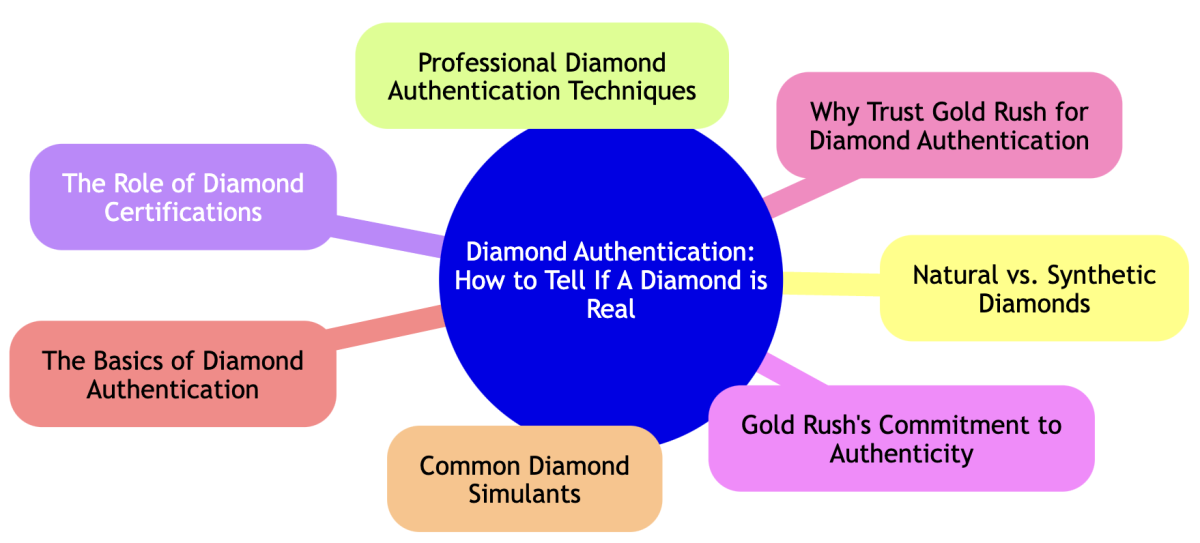Diamonds possess distinct properties that set them apart from other stones and synthetics.
Lakewood, United States - April 2, 2024 / Gold Rush Lakewood /
Introduction
Diamonds possess distinct properties that set them apart from other stones and synthetics, such as their unmatched hardness, brilliance, and thermal conductivity.
When it comes to gemstones, the diamond stands out for its unparalleled brilliance and value. However, the market's allure has given rise to synthetic diamonds and convincing look-alikes, making authentication more important than ever.
This article is from the trusted experts at Gold Rush Lakewood - your best bet for selling diamonds in Denver.
Key Takeaways
- Authenticating diamonds protects your investment and ensures quality.
- Synthetic diamonds and look-alikes require savvy identification techniques.
- Professional assessments provide the most reliable authentication.
- Understanding a diamond's unique properties is key to its verification.
- Gold Rush's expertise offers a trusted source for diamond authentication.

The Basics of Diamond Authentication
Diamond authentication is not just a practice but a necessity in preserving the integrity of the gemstone market.
The ability to verify a diamond's authenticity upholds the value and trust in these transactions for both buyers and sellers.
Diamonds possess distinct properties that set them apart from other stones and synthetics, such as their unmatched hardness, brilliance, and thermal conductivity.
These inherent characteristics are the foundation of diamond authentication, guiding experts and novices alike in identifying genuine diamonds. From the way a diamond refracts light to its resistance to scratches, each property offers clues to its authenticity.
As the market evolves, so do the methods of creating synthetic diamonds, making it imperative for authentication techniques to be both sophisticated and accessible. Gold Rush's emphasis on thorough authentication processes reflects a commitment to quality, ensuring that every diamond it handles meets the highest standards of authenticity.
Natural vs. Synthetic Diamonds
Natural and synthetic diamonds share many qualities, but their origins and values set them apart.
Natural diamonds form over billions of years under the earth's crust, making them rare and often more valuable. Synthetic diamonds, created in labs, mimic these natural processes in a fraction of the time. While both types of diamonds exhibit the same physical and chemical properties, natural diamonds typically hold greater market value due to their rarity and the romanticism attached to their ancient origins.
Synthetic diamonds offer a more affordable and environmentally friendly option, appealing to those prioritizing sustainability and cost.
Common Diamond Simulants
While diamonds are renowned for their brilliance and durability, several materials mimic their appearance but not their properties.
- Cubic Zirconia (CZ): A synthetic material that is visually similar to diamond but much softer, making it prone to scratches and wear over time.
- Moissanite: Nearly as hard as diamond and even more brilliant, moissanite differs in its refractive properties, displaying a rainbow effect under light.
- White Sapphire: Lacks the brilliance and fire of a diamond due to its different crystal structure, making it appear more muted.
- Glass: The least convincing simulant, glass easily chips and lacks the hardness and sparkle of a real diamond.
Home Tests for Diamond Authentication
Several simple tests can provide initial insights into a diamond's authenticity, though they should not replace professional evaluation.
- The Water Test: Drop the stone into a glass of water. A real diamond sinks due to its high density, while many simulants float.
- The Fog Test: Breathe on the diamond. Real diamonds disperse heat quickly, so the fog should clear up almost immediately.
- The Dot Test: Place a dot on a piece of paper and lay the stone over it. If you can't see the dot through the diamond, it's likely real due to the diamond's high refractive index.
The Limitations of Home Testing
While home tests can be fun and informative, they come with significant limitations. Many factors, such as the cut of the stone or the presence of dirt, can affect the outcomes of these tests, leading to potential inaccuracies.
Moreover, synthetic diamonds and high-quality simulants can sometimes mimic the properties of natural diamonds closely enough to pass these tests.
Professional verification using advanced equipment and techniques is essential for a definitive authentication. This ensures that the diamond's value, origins, and authenticity are accurately assessed, providing peace of mind to both buyers and sellers.
Professional Diamond Authentication Techniques
Professionals use a suite of advanced techniques to authenticate diamonds, ensuring their genuineness beyond a shadow of a doubt.
Techniques like the use of a jeweler's loupe allow experts to examine diamonds for natural inclusions, which are rarely found in simulants. Thermal conductivity tests exploit the fact that diamonds disperse heat rapidly, distinguishing them from most fake stones.
UV light tests reveal how diamonds respond to ultraviolet light, with most showing a blue fluorescence—a feature less common in imitations.
Comparison of Professional Techniques
Technique | Effectiveness | Best Used For |
Jeweler's Loupe | High | Identifying inclusions, craftsmanship |
Thermal Conductivity | Very High | Distinguishing diamond from most simulants |
Very High with today's technology | Detecting fluorescence, a common diamond trait |
The Role of Diamond Certifications
GIA Certification
- The Gemological Institute of America (GIA) sets the standard for diamond certification, offering detailed reports on a diamond's characteristics, including its 4Cs—cut, color, clarity, and carat weight. GIA certification is a hallmark of authenticity and quality.
AGS Certification
- The American Gem Society (AGS) is known for its scientific approach to diamond grading, particularly in cut quality. AGS certifications assure buyers of the precise quality and authenticity of their diamonds.
Other Notable Certifications
- Organizations like HRD Antwerp and IGI also provide diamond certifications, each with its unique grading standards. These certifications contribute significantly to the authentication process, offering an additional layer of trust and assurance.
Why Trust Gold Rush for Diamond Authentication
Choosing Gold Rush for diamond authentication means placing your trust in a partner renowned for its expertise and reliability. With a deep understanding of diamond authentication techniques and a commitment to using only certified diamonds, Gold Rush offers unparalleled assurance in the authenticity of its diamonds. Whether you're buying or selling, you can do so with confidence, knowing that Gold Rush's expertise is at your service.
Wrapping Up - Your Trusted Local Gold and Diamond Buyers
The authentication of diamonds plays a pivotal role in preserving their value and integrity, guaranteeing that buyers and sellers can engage in transactions with confidence. Professional techniques, alongside reputable certifications, form the backbone of this authentication process.
Gold Rush's dedication to these principles of authenticity makes it a trusted ally in the diamond market. For those seeking expert diamond authentication services (or buying and selling precious metals), look no further than Gold Rush. Rely on their expertise to ensure that your diamond transactions are secure, transparent, and genuine.

Contact Information:
Gold Rush Lakewood
650 S Wadsworth Blvd #G
Lakewood, CO 80226
United States
Public Relations
(303) 282-4651
https://goldrushdenver.com/
Original Source: https://goldrushdenver.com/pages/lakewood-location



